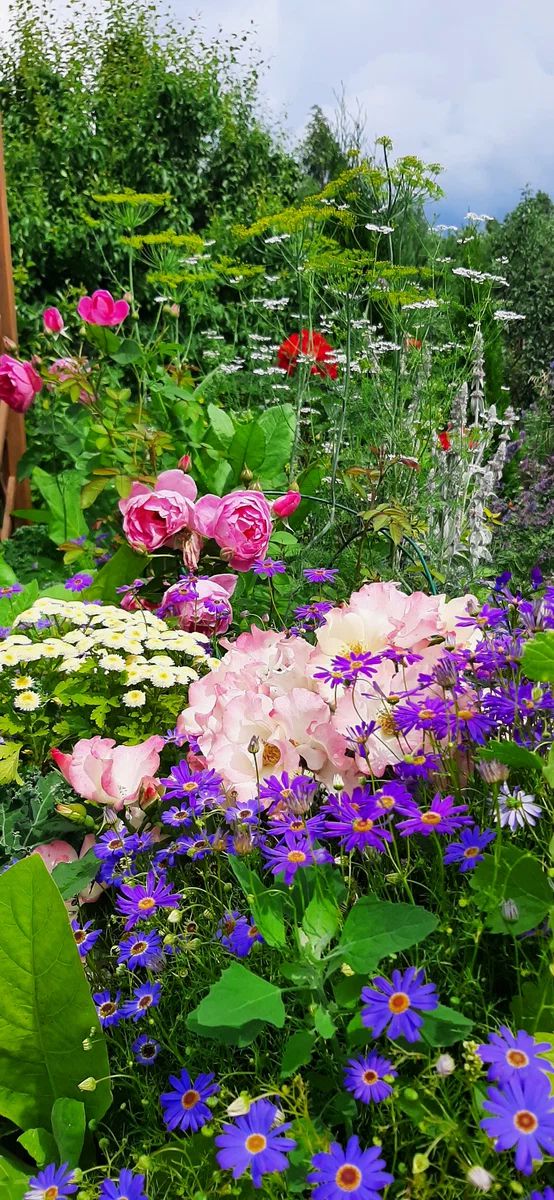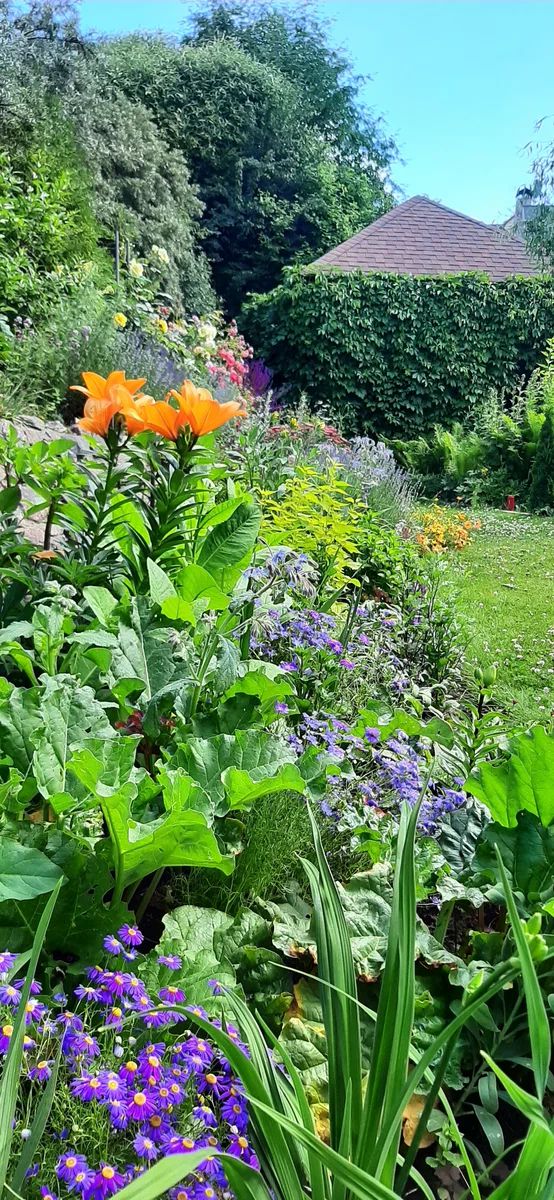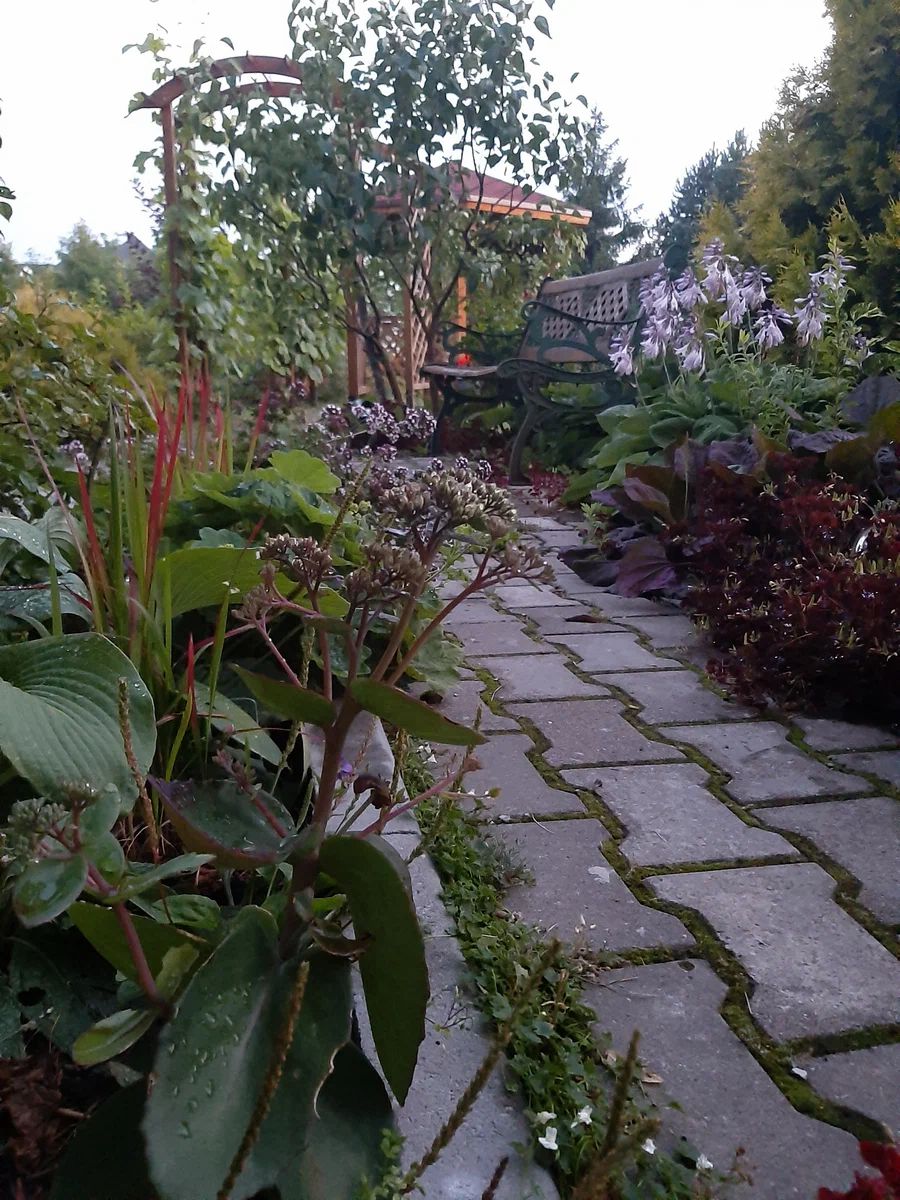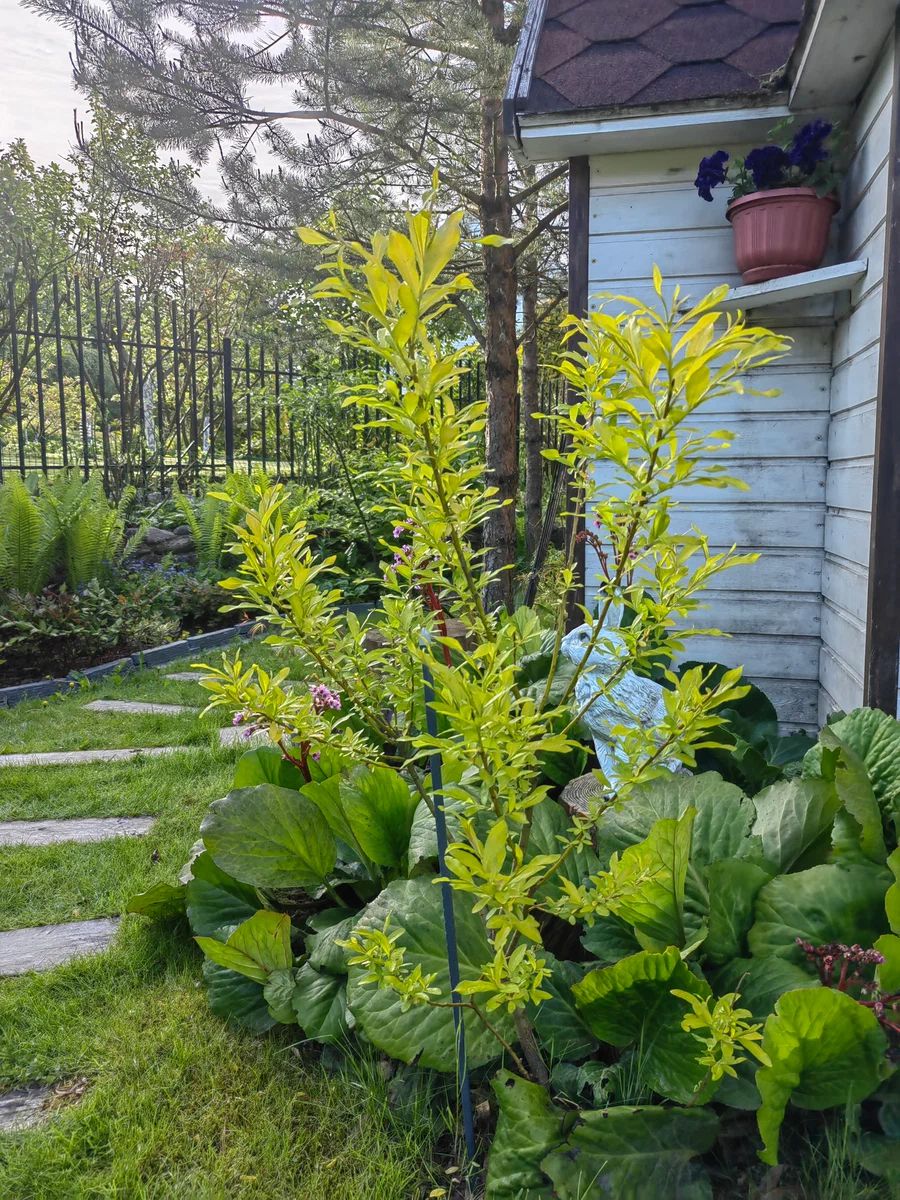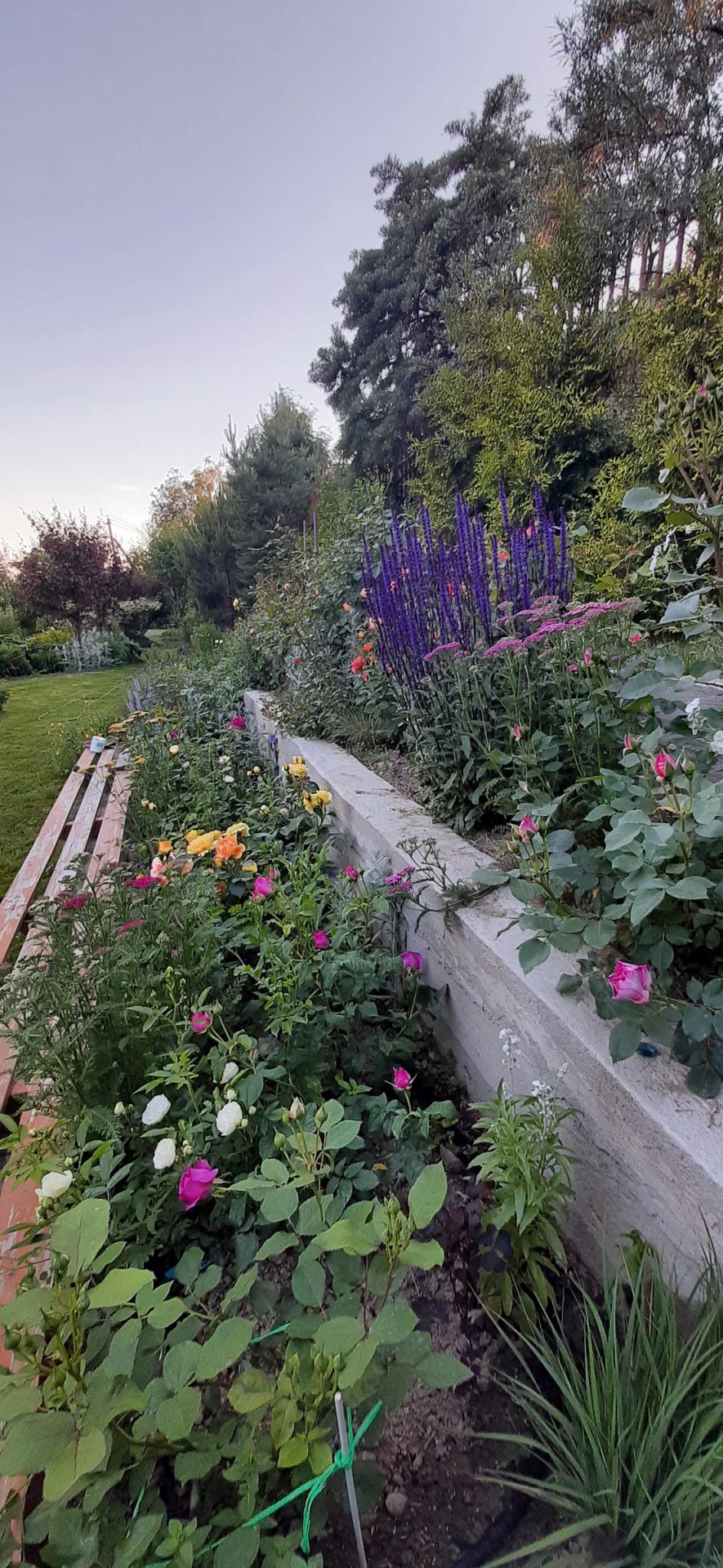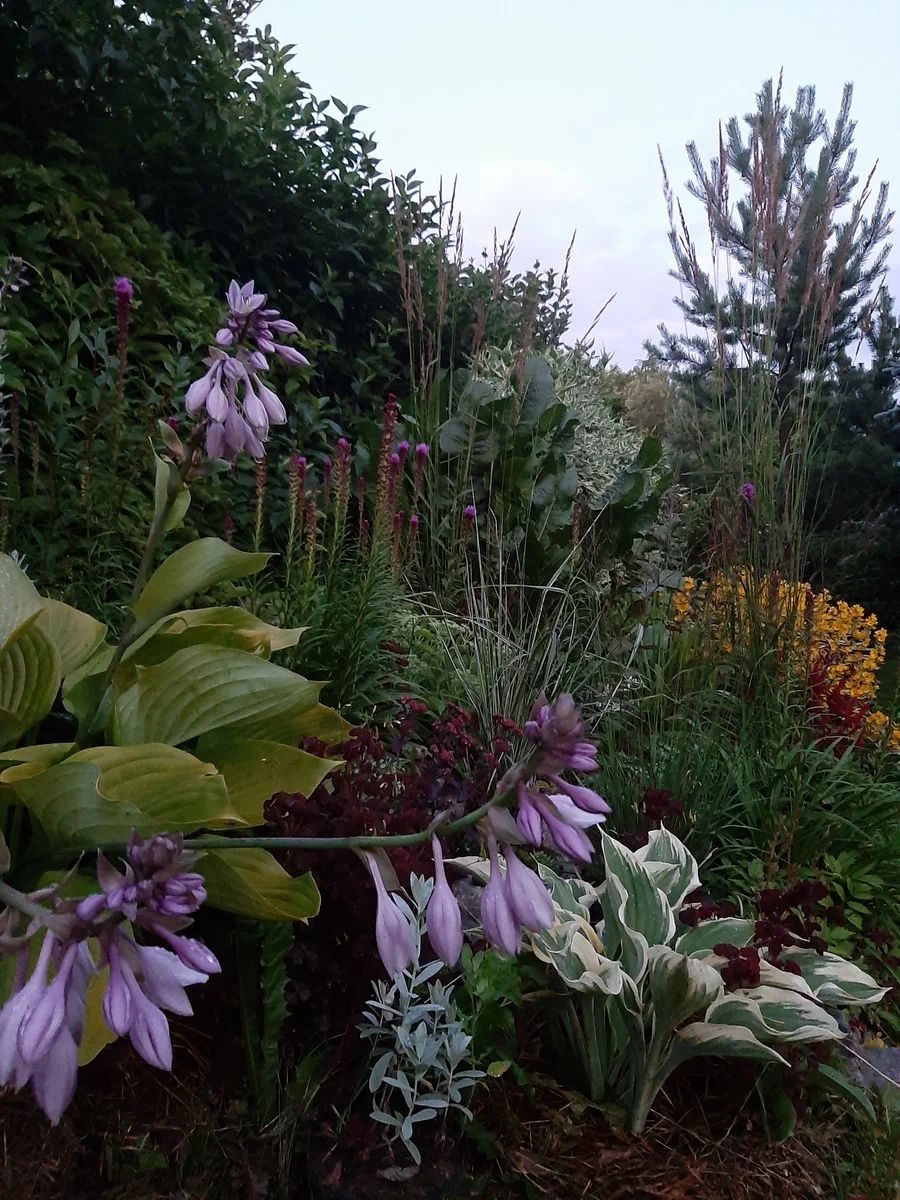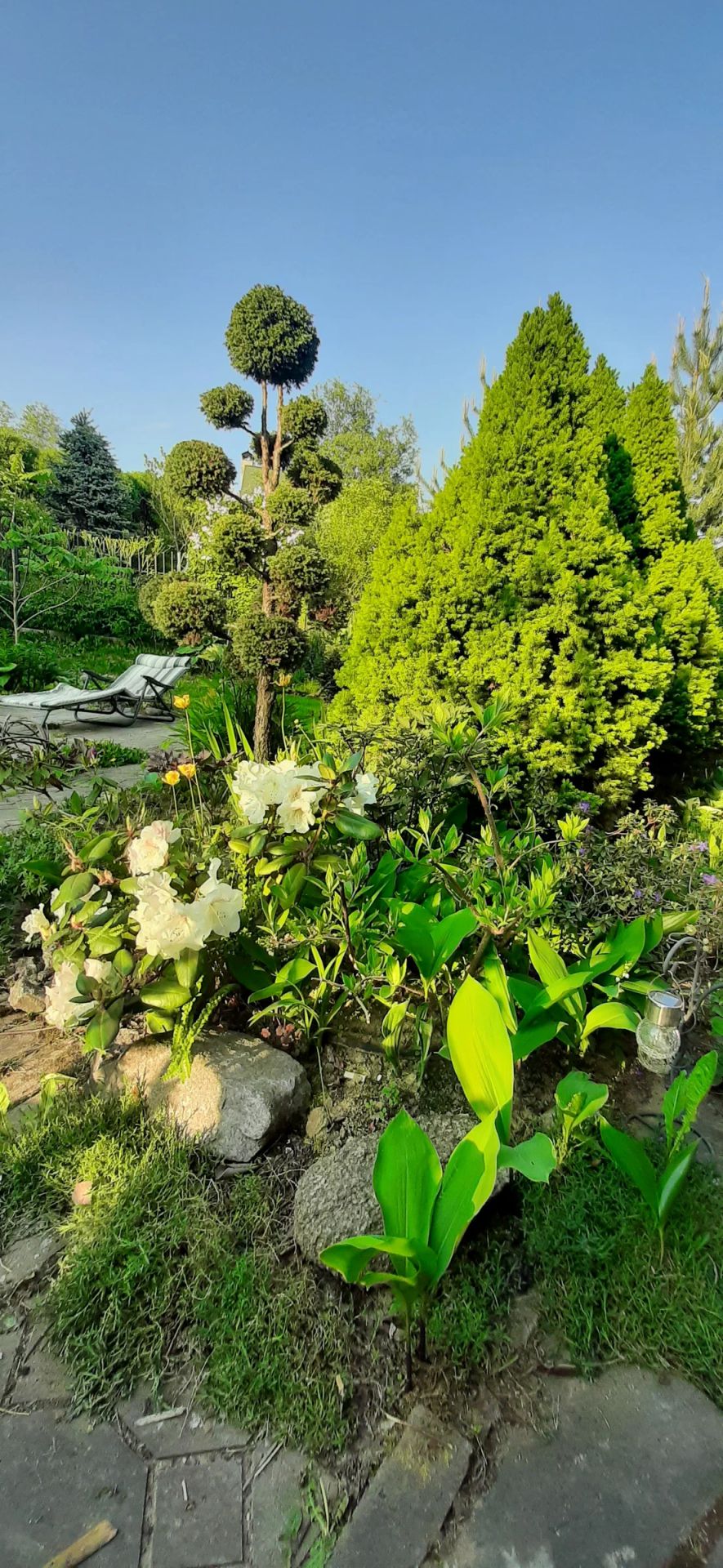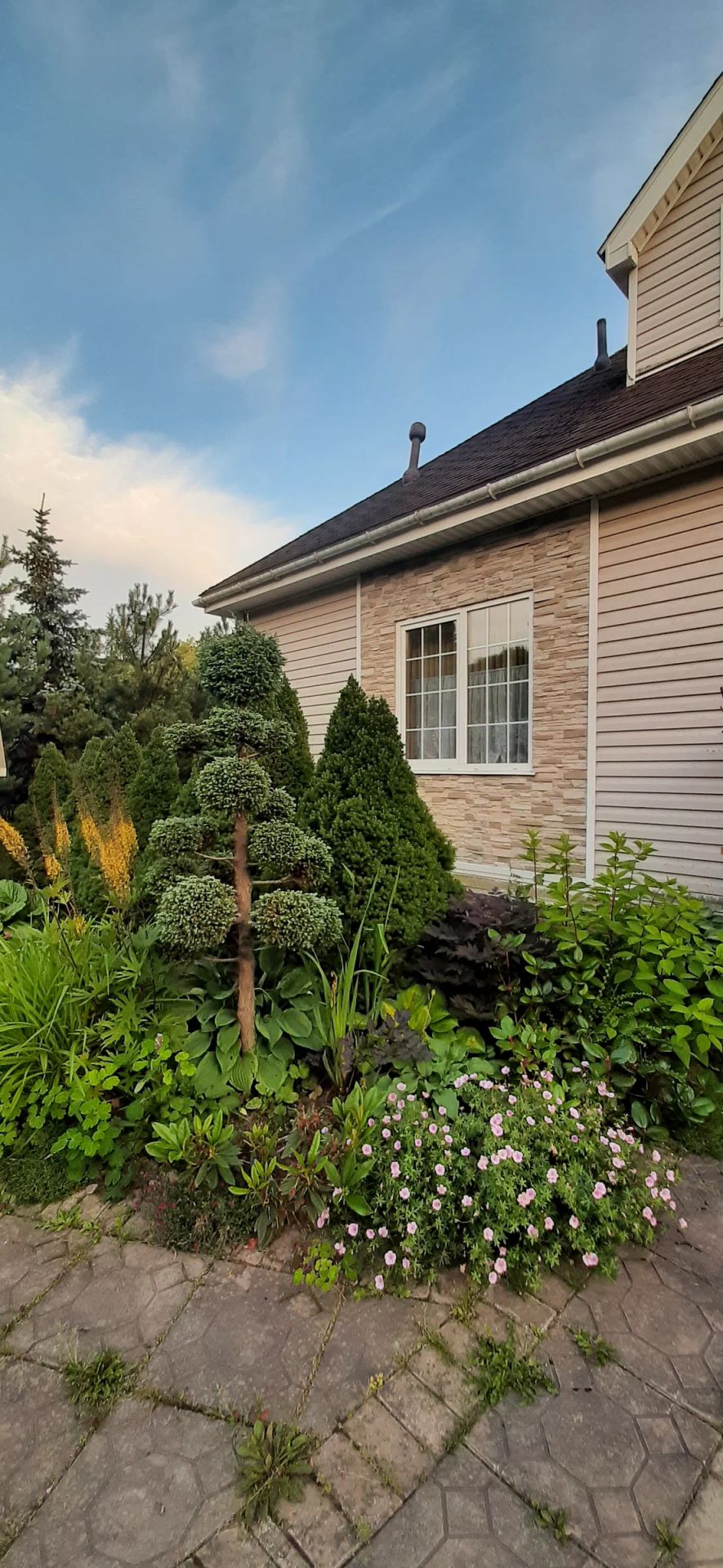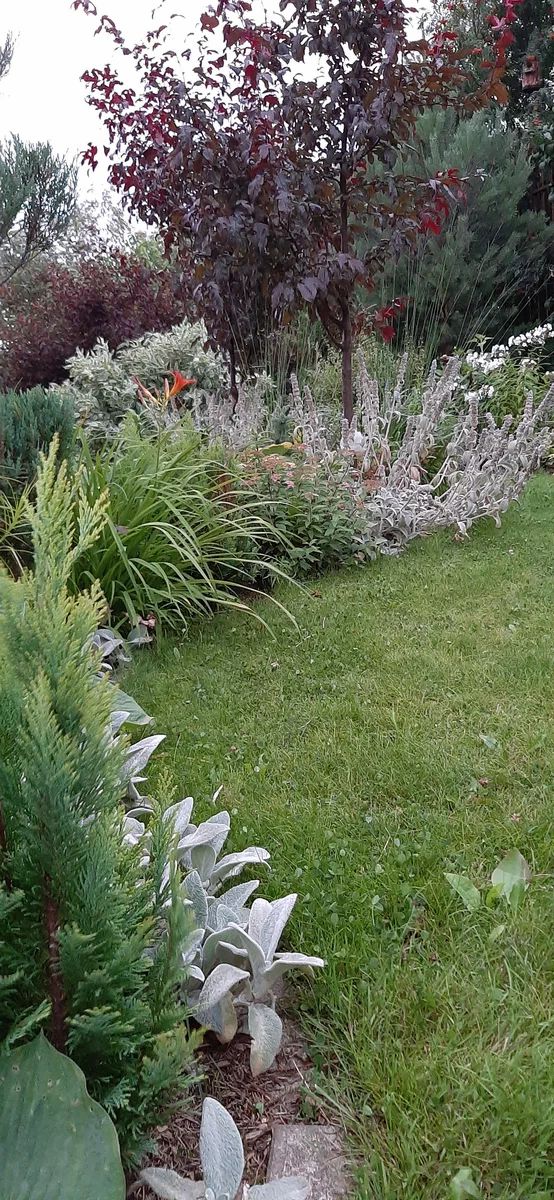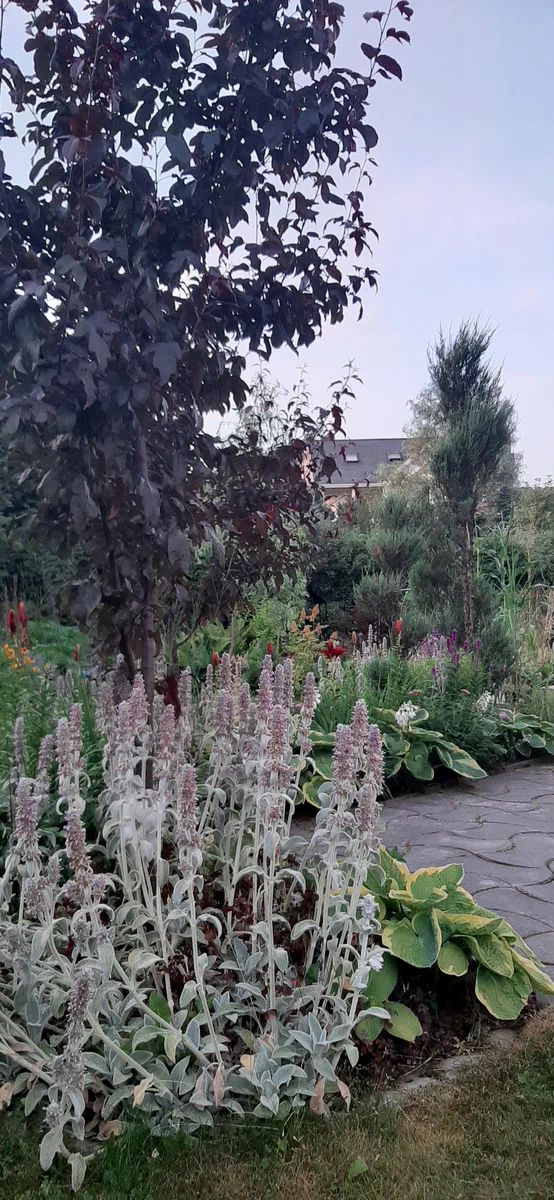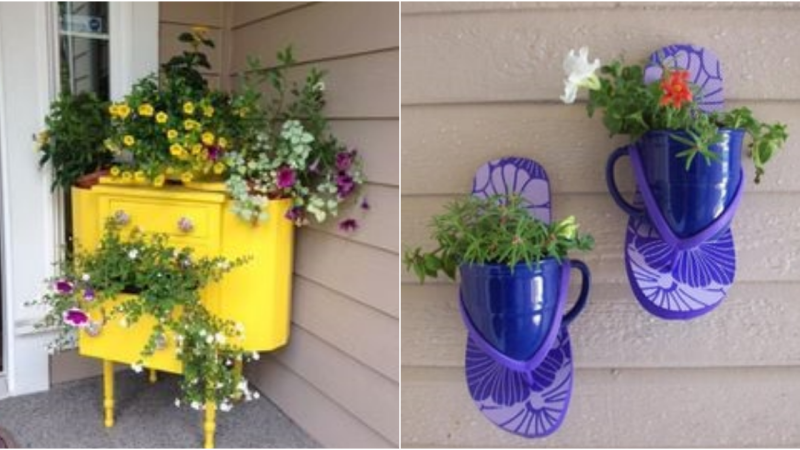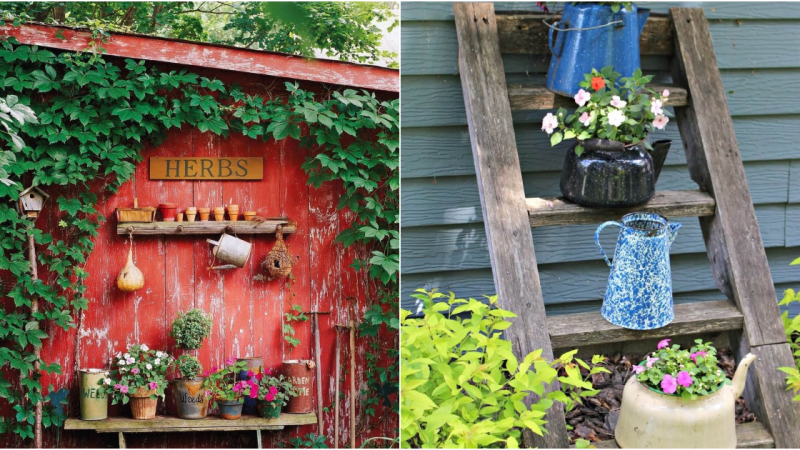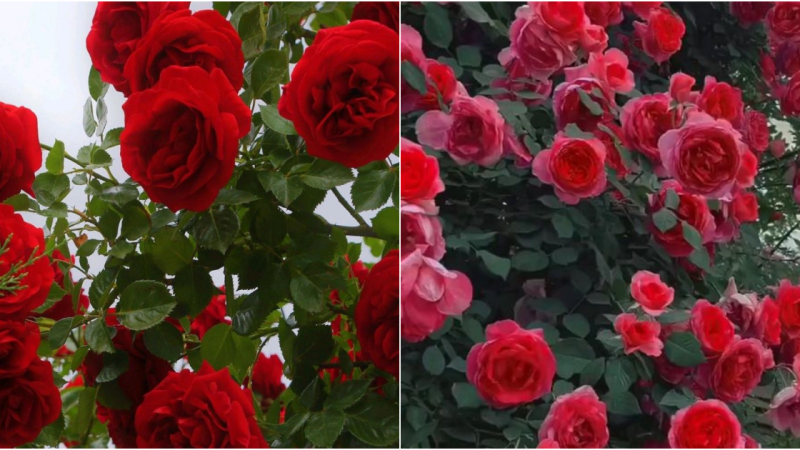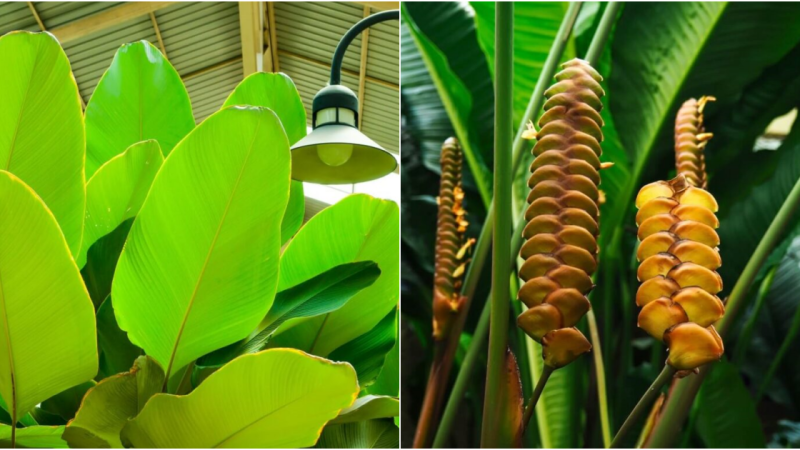Elena Stepanova’s Wonderful Garden in the Leningrad Region
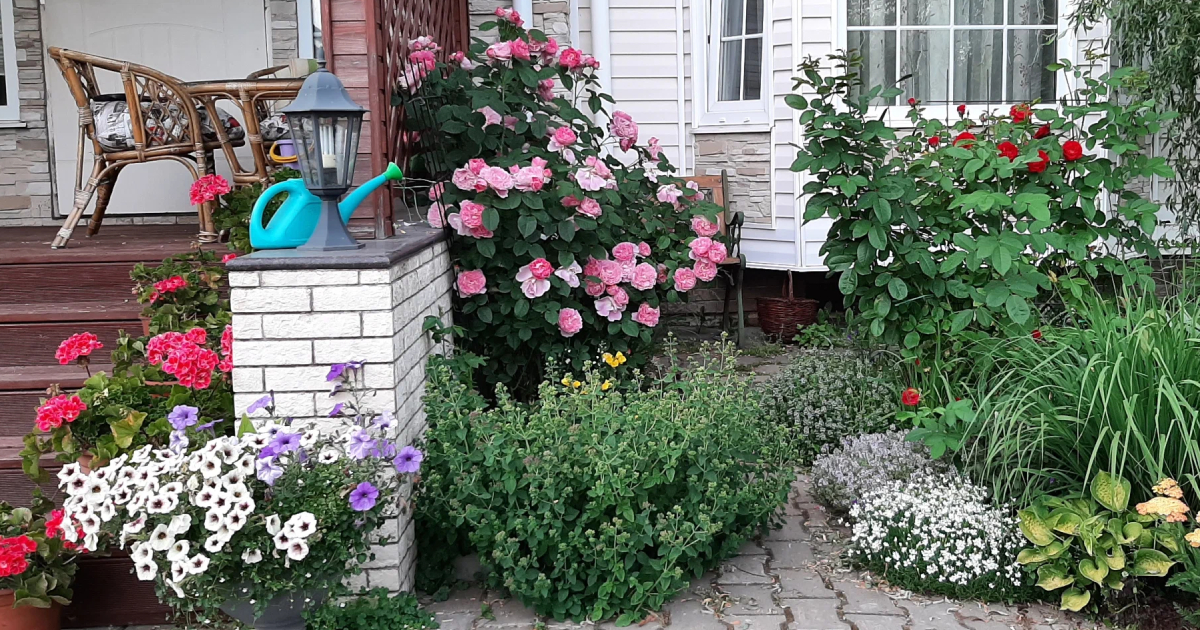
It’s heartwarming to see that readers of the channel enjoyed my spring garden photo, and I hope that pictures of other seasons won’t disappoint.

The garden is gradually being created and finding its identity. The flower beds take shape over several seasons. In the first year or two, annuals are planted to support perennials (recently, brachycome was planted, which pairs beautifully with roses), and at the same time, it becomes clear whether something needs to be added or removed.
I tried to select photos of established flower beds.
My favorite color is yellow, as it compensates for the lack of sunlight in the northwest. There are yellow berberis shrubs (only one was purchased, the rest were found in the garden), willows, lilacs, yews, spireas, barberries, raspberries (growing in a container), and various flowers.
The brightest spot in the garden is the “big” rose garden – diverse and cheerful. Eighteen roses are planted in two levels against a retaining wall, with an additional seven nearby. The rose garden is adjacent to a vine-covered gazebo, serving as support for the slope. Before the roses bloom, pansies bloom, echoing the color of the roses they grow alongside. An interesting addition to the roses is coriander.
Overall, the garden is filled with vibrant colors, but that doesn’t mean there are no tranquil corners – they do exist, you just need to know where to look. For instance, opposite the rose garden, there is a flower bed with ferns and astilbes. If you tire of the roses, turn around and admire the greenery, with only the scent of roses lingering (if you’re lucky, as strong fragrance isn’t consistent and depends on the weather and time of day).
Many of the flower beds feature grasses (molinia, ligularia, sedge) as additions. There’s a rarely used plant called wood-rush. It’s a marvelous plant, somewhat reminiscent of the hakone grass that doesn’t grow in our area.
There have been unsuccessful plantings and mistakes. A couple of skyrocket junipers lived fine for several years on a hill, but then they withered. It was a pity to throw them away, so they were moved to the shady side of the house along with some scarecrows. We couldn’t leave them alone, so we added Helen apples, a few more spring-burning enthusiasts, and perennials. Initially, the irises were planted along the main staircase and grew well, but they were attacked by spider mites (due to our inexperience)… and the scarecrows moved behind the house. Now there’s a place for solitude there. Along the staircase, tall arborvitaes thrive.
Unlike the junipers, the scarecrows remained “scary” for many years. During the pandemic, we were bored… and the scarecrows acquired a certain form that suited them, based on the already existing bald patches. A couple more overgrown evergreen plants joined the “topiary.” Gradually, failures turned into advantages and unique features of the garden.
The garden has many aggressive plants: stachys (it dominates everything around), verbenas (I even leave the wild ones), Rubra plantain (I plant it in empty spaces), periwinkles, hostas, pansies, euphorbias, sea buckthorn, and… (please don’t be alarmed) Sakhalin knotweed, which was planted in a location where only survival is possible, as it would be sad for normal plants. It thrives at the base of the garden, attempting to spread, but timely weeding keeps it in check. However, it creates a stunning fence in the summer. In late autumn, it becomes covered in white flowers, resembling powdered snow. The dry stems make excellent mulch and material for decorative fences (almost like bamboo).
Alongside the aggressors, there are unusual plants for us: emperor’s flower (hibernating under cover with the roses, it spreads quite quickly), ophiopogon (it winters well if you place coniferous branches over it), and grapes.
Lavender grows (over ten bushes). I don’t know whether to classify it as an aggressor or a rarity. Sometimes, parts of the branches may freeze, but it regenerates. It has even grown in places that aren’t quite suitable for lavender, while refusing to grow in appropriate locations.
Overall, I don’t worry too much if perennials fail; they can always be replaced with something new. Some plants move several times before finding their place, while others become container plants, adorning the patio. That’s perhaps the “soul of the garden,” evolving year after year as the garden grows and gains strength, leaving only what creates a certain harmony that one must agree with.
